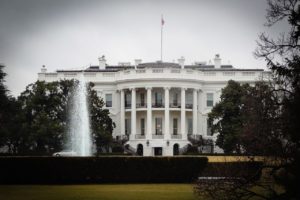- Calls to this hotline are currently being directed to Within Health, Fay or Eating Disorder Solutions
- Representatives are standing by 24/7 to help answer your questions
- All calls are confidential and HIPAA compliant
- There is no obligation or cost to call
- Eating Disorder Hope does not receive any commissions or fees dependent upon which provider you select
- Additional treatment providers are located on our directory or samhsa.gov
Election Update: Body-Shaming Statues Reach a New Low

In mid-August 2016, large statues of a nude Donald Trump popped up in five major cities across the United States. These “political art” pieces and body-shaming statues depicted Trump in a very unflattering light, complete with sagging skin, cellulite, and small genitalia.
The general public has varying opinions on these statues, part of an art installation by a group called Indecline, titled “The Emperor Has No Balls.” Many people laughed and took selfies with these statues, which were only up in their respective cities for approximately one hour, while others were offended at the disrespectful depiction of someone who might be the next President of the United States.
Others countered that this was an appropriate dose of karma after Trump’s own controversial comments on women’s bodies.
Body-Shaming Statues is Not Art
Regardless of your opinions on Donald Trump and his political views, it is important to recognize that this art installation is a socially irresponsible way to take aim at him. By mocking his body in such a public way, it encourages body-shaming during a presidential campaign that has already included an unprecedented amount of cyberbullying, body-shaming, and hate speech.
There has also been a significant double standard throughout this election season. While this has generally applied to the mistreatment, objectification, or judgment of women involved in the campaign, it also applies here.
Imagine the national outrage if nude statues of former Secretary of State Hillary Clinton popped up across the country claiming to be “political art,” with a title referencing her private parts. If mocking a woman in this very public way is considered too disrespectful and immoral, what makes “The Emperor Has No Balls” more socially acceptable?
The point is that body-shaming is not art. In this case, it is an unsuccessful attempt to ridicule a man whose controversial opinions and policy views should provide enough fodder for the media.
The Message this Sends
Poking fun at someone on the basis of his or her body sends a dangerous message to our children. It says that this kind of behavior is acceptable, or even encouraged.
This is not the first time in this election that the public seems to have forgotten about this important reality. Secretary Clinton has even released campaign ads highlighting the fact that the words of candidates throughout this election, both positive and negative, are being absorbed by our children. Some viral social media posts from concerned parents have documented how racist terms or other forms of hate speech have made their way from presidential debates to the mouths of students in their children’s classrooms.
While there are bound to be harsh words spoken between candidates during an election year, social media appears to have raised the stakes while lowering moral standards. Younger populations gravitate toward social media, so it makes sense that they are soaking up the contents of this presidential campaign more than ever before. It would be wise for candidates to recognize this and act in a way that promotes acceptance and unity.
An Eye for an Eye
 Some proponents of the Trump statues feel that the newly minted politician’s own comments perceived as hateful or judgmental with regard to body image warranted this art installment. While it can be interpreted that Indecline’s intent was to give Trump a taste of his own medicine, is this really what we have come to as a nation?
Some proponents of the Trump statues feel that the newly minted politician’s own comments perceived as hateful or judgmental with regard to body image warranted this art installment. While it can be interpreted that Indecline’s intent was to give Trump a taste of his own medicine, is this really what we have come to as a nation?
As Mahatma Gandhi eloquently said, “An eye for an eye makes the whole world blind.” By excusing the ageist and body-shaming statues by citing Trump’s own perceived bigotry, we are practicing moral relativism on a national scale. This is dangerous and leaves no one safe.
It should be noted that many people and organizations on both sides of the aisle have come forward as condemning the art installation. The statues were only up for a brief period of time and made a huge impact on social media, but more importantly, started a dialogue on body-shaming and where to draw the line when attacking public figures who disagree with your own personal beliefs.
When done in an effective way, political art and satire in popular culture can be entertaining and even poignant. All we can do now is recognize these statues were an unsuccessful attempt at this, and move forward with the collective intention to do better in the future.
About the Author:

Courtney Howard graduated summa cum laude with a B.A. from San Diego State University, holds a paralegal certificate in Family Law and is a Certified Domestic Violence Advocate. After obtaining her certification as a life coach, Courtney launched Lionheart Eating Disorder Recovery Coaching in 2015 and continues to be a passionate advocate for awareness and recovery.
The opinions and views of our guest contributors are shared to provide a broad perspective of eating disorders. These are not necessarily the views of Eating Disorder Hope, but an effort to offer discussion of various issues by different concerned individuals.
We at Eating Disorder Hope understand that eating disorders result from a combination of environmental and genetic factors. If you or a loved one are suffering from an eating disorder, please know that there is hope for you, and seek immediate professional help.
Last Updated & Reviewed By: Jacquelyn Ekern, MS, LPC on August 29, 2016
Published on EatingDisorderHope.com

The EatingDisorderHope.com editorial team comprises experienced writers, editors, and medical reviewers specializing in eating disorders, treatment, and mental and behavioral health.

